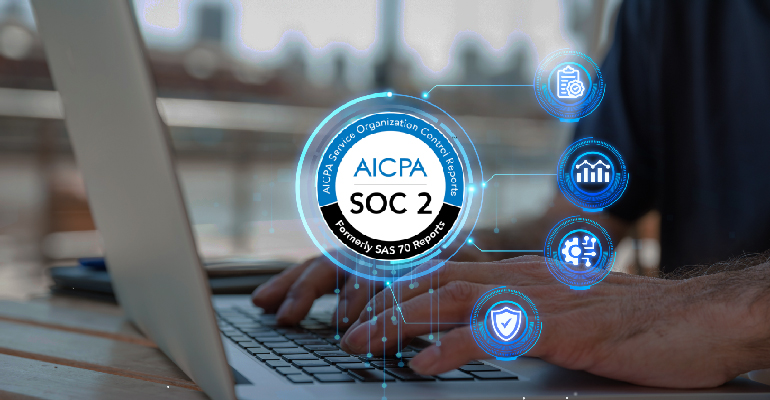SOC 2 is a standard for managing client data that was created by the American Institute of CPAs (AICPA) and is based on five “trust service principles”: security, availability, processing integrity, confidentiality, and privacy.
SOC 2 reports are particular to each organization, unlike PCI DSS, which has very strict criteria.
Each one develops its own controls to adhere to one or more of the trust principles in accordance with its business practices.
These internal reports give you crucial knowledge about how your service provider handles data, as well as information for regulators, partners in business, suppliers, etc.
SOC 2 reports come in two varieties:
- Type I :
Outline the systems of a vendor and whether or not their design complies with pertinent trust principles.
- Type II:
Describe how well those systems function operationally.
SOC 2 certification is generally issued by external auditors. Based on the systems and processes in place, they evaluate how closely a vendor adheres to one or more of the five trust principles.
The following is a breakdown of the trust principles of SOC 2:
1. Safety
The security concept deals with preventing unwanted access to system resources. Access controls aid in preventing potential system abuse, data theft or unauthorised removal, software misuse, and incorrect information manipulation or disclosure.
Intrusion detection, two-factor authentication, network and web application firewalls, and other IT security solutions are helpful in preventing security breaches that could result in unauthorised access to systems and data.
2. Accessibility
According to a contract or service level agreement(SLA), the accessibility of the system, goods, or services is referred to as the availability principle.
As a result, both parties agree on the minimum acceptable performance level for system availability.
This concept includes availability-related and security-related requirements but does not address system operation and usability.
Monitoring network availability and performance, managing site failover, and responding to security incidents are crucial in this situation.
3. Processing consistency
The processing integrity concept examines whether a system succeeds in its objectives (i.e., delivers the right data at the right price at the right time).
As a result, data processing needs to be approved, legitimate, comprehensive, and accurate.
Processing integrity, however, does not always imply data integrity. It is typically not the processing entity’s obligation to identify faults in data if they already exist when the data is inputted into the system.
Processing integrity can be ensured with the use of monitoring data processing and quality assurance techniques.
4. Remaining discreet
Data is regarded as confidential if access to and disclosure of the information is limited to a particular group of people or organisations.
Data that is exclusively meant for use by employees of the organization, as well as business strategies, proprietary information, internal price lists, and other sorts of sensitive financial information, are a few examples.
An essential safeguard for maintaining transmission secrecy is encryption.
Information that is handled or kept on computer systems can be protected by network and application firewalls as well as stringent access controls.
5. Privacy
The privacy principle focuses on how the system collects, uses, retains, discloses, and discards personal data in accordance with the organization’s privacy notice and standards outlined in the AICPA’s Generally Accepted Privacy Principles(GAPP).
Details that can identify an individual are referred to as “personal identifiable information” (PII) (e.g., name, address, Social Security number).
A higher level of security is typically required for sensitive personal information, which includes health, race, sexual orientation, and religion. All PII must be shielded from unwanted access via controls.





